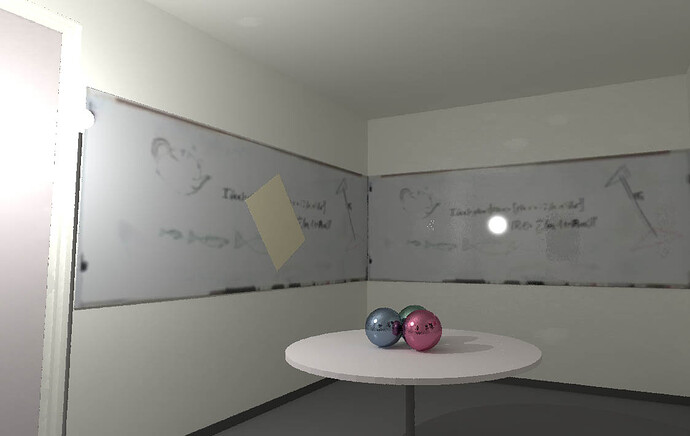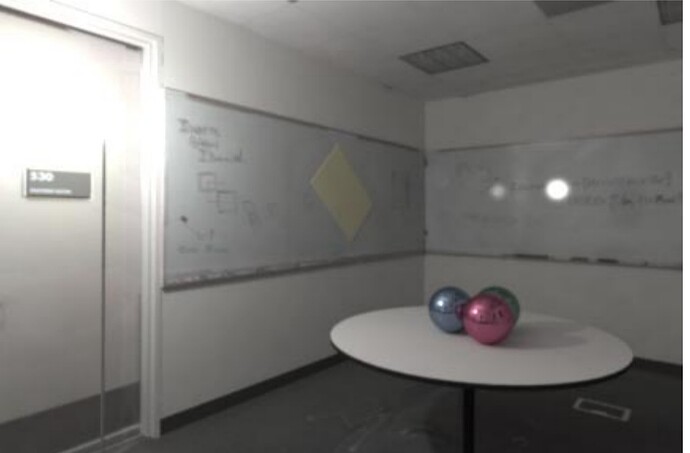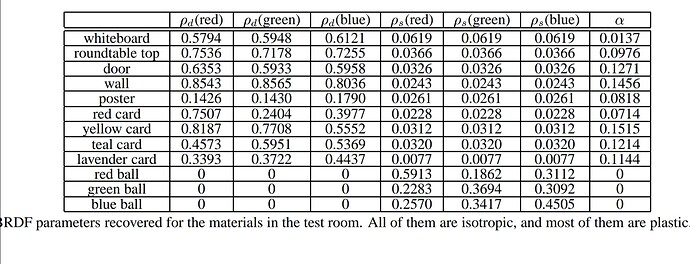hi,
i was reading a research paper from paul debevec’s site “inverse radiosity” in this paper it is said that renderings were produced using Greg Ward’s radiance lighting system. So i downloaded radiance made a scene closely resembling the one shown in paper and wrote all BRDFs parameters from paper into radiance scene and rendered the scene hoping i will get same result as shown in paper,but to my amazement scene came out to be quite unrealistic inaccurate even though materials were same even on high possible setting like -ad 50000 -ar 1024 the scene is not photorealistic i wonder if they implemented another algorithm inside radiance to render the scene, but can you help me? if you need the scene i will give it to you to check why lighting is so bad.
https://www.pauldebevec.com/Research/IGI/
I am in no way owner of this research work i just want to check if radiance can indeed produce such
photoreal renders as shown in paper.
If this is your rendering, it doesn’t look too bad to me… You just need to render at a higher resolution and use pfilt to reduce the result to overcome the aliasing. For new users (and even experienced ones), we usually recommend the “rad” program to control the rendering parameters and process. It is much easier to handle than the basic tools, and still provides for overriding most settings if you have a particular need.
Just to be clear, though. The purpose of Radiance is not photorealism so much as photometric accuracy. It’s not going to produce renderings as perfect-looking as you see from other commercially available tools, but it will be closer to the real world.
Hi,
Thanks for reply Greg your renderer is really cool because the renderings in the paper were also produced using your tools, only difference is that the renderings produced by radiance in paper are much more natural looking even with same Brdf parameters, but here in my scene this looks no where as good quality even though the renderings are from same tool, and yes the scene is mine i modeled this in 3ds max then imported in radiance using obj2mesh and converted to rtm the light is spherical source,but thanks for your answer i appreciate.
So, which artifacts are particularly bothering you? Aliasing is the first thing that I notice, followed by some specular issues with the white board frames, but those were also in the figures from the paper.
hi,
Greg you can see the actual rendering from paper by radiance, you can see the overall illumination is natural, and notice secondry specular highlight which is not present in my render although my options were
-lr 20 -st 0 -dt 0 -dc 1 -ad 4096 -ar 1024
but i noticed secondary highlight issue can be resolved using -ss 1024, but problem is not this since i know radiance can produce realistic image, but i don’t know what’s causing difference in overall illumination even though scene is quite same and parameters were giver are also same
here are brdfs from paper.
They may have used tone-mapping to obtain a more natural appearance in their photo. The standard Radiance rendering gives back pure radiance/luminance values, which most displays cannot reproduce. Try running your result through the pcond program.
hi,
Thank you Greg i tried pcond already, i notice pcond -v gives the closest of all options, but it doesn’t look the same i don’t know why -h gives me somewhat higher contrast and darker corners. But rendering it can be they actually recovered actual camera parameters which they used to capture photos like ISO f-stop WB because this can be case if i am correct,but i will see whats the problem, again thanks for your help.
I don’t remember what they did regarding tone-mapping. It’s possible that they used film photography and attempted to reproduce the film curve in their rendering. There is a roll-off of the highlights, especially with negative film, and this is similar to Reinhard’s photographic tone-mapper. There was a discussion about this recently on Discourse here.
Thank you Greg for the link, i will see tomorrow if this solves my problem.


